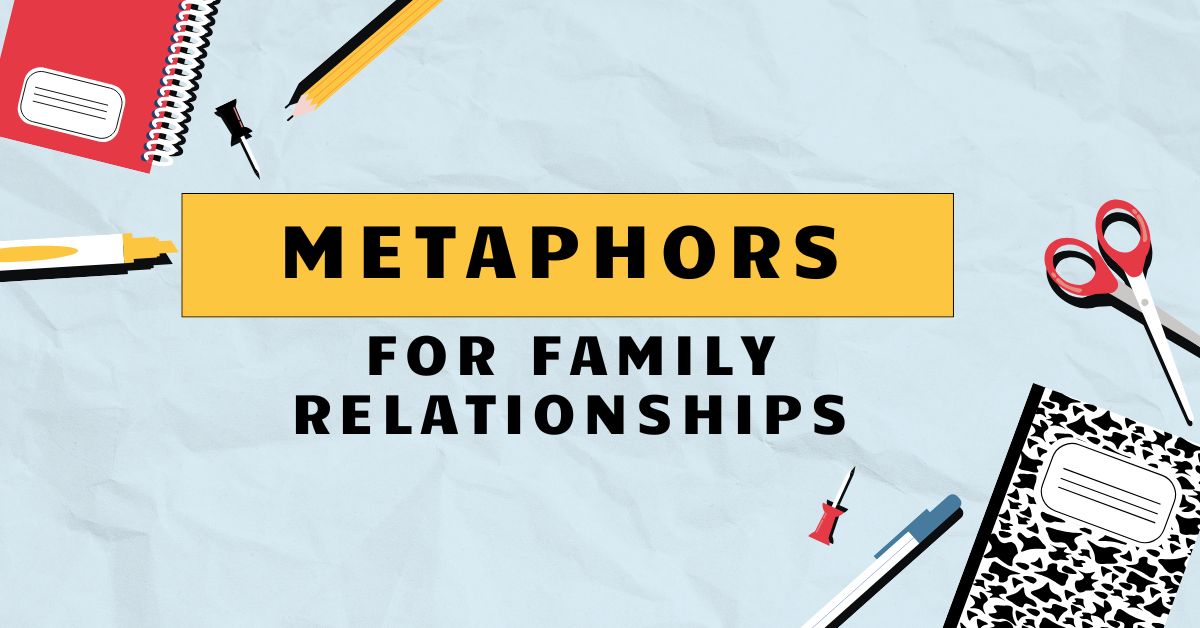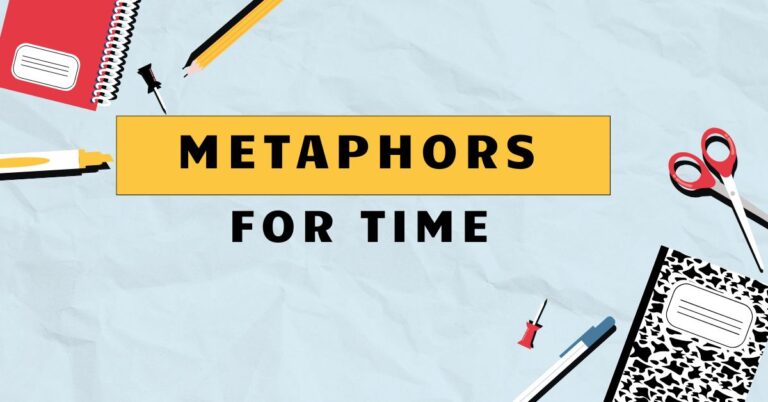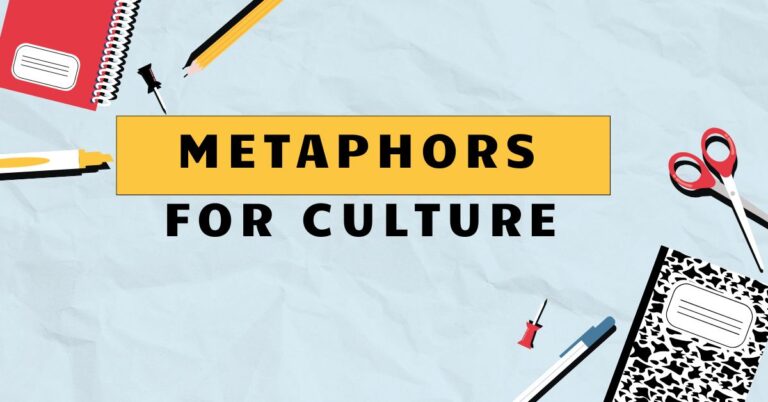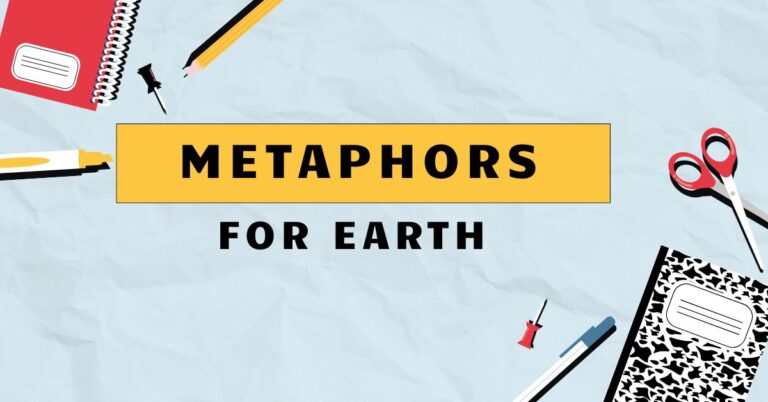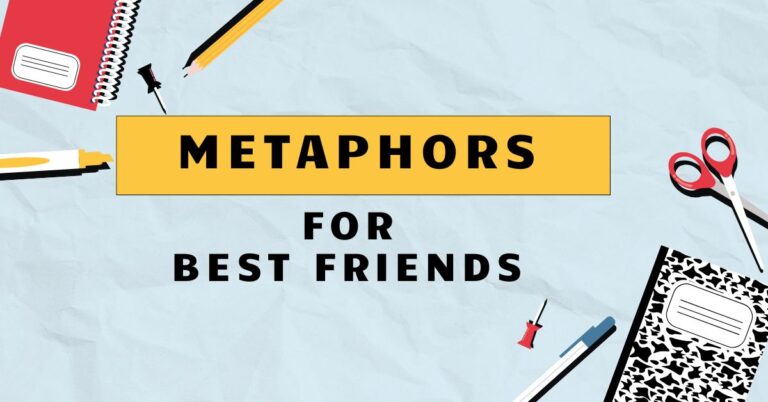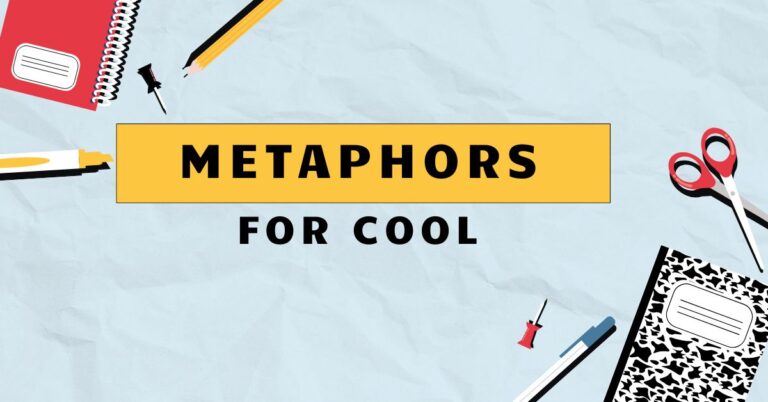43 Metaphors for Family Relationships: A Grammatical Guide
Understanding metaphors is crucial for mastering English, especially when describing abstract concepts like family relationships. Metaphors allow us to express complex emotions and dynamics in a vivid and relatable way.
This article provides a comprehensive guide to using metaphors to describe family relationships, covering definitions, structural elements, types, usage rules, common mistakes, and practice exercises. This guide will benefit English language learners, writers, and anyone interested in the nuances of language and family dynamics.
Table of Contents
- Introduction
- Definition of Metaphor for Family Relationships
- Structural Breakdown
- Types of Family Relationship Metaphors
- Examples of Metaphors for Family Relationships
- Usage Rules
- Common Mistakes
- Practice Exercises
- Advanced Topics
- FAQ
- Conclusion
Definition of Metaphor for Family Relationships
A metaphor is a figure of speech that directly compares two unrelated things, implying a similarity between them without using “like” or “as.” When applied to family relationships, metaphors offer a powerful way to describe the complex dynamics, emotions, and roles within a family unit. These metaphors can highlight the strengths, weaknesses, or overall nature of the relationships.
Understanding these metaphors enhances our ability to communicate and comprehend familial bonds.
Metaphors function by transferring qualities from one concept (the source domain) to another (the target domain). In the context of family, the target domain is the family relationship itself, while the source domain can be anything from nature to architecture to journeys.
For example, calling a family “a well-oiled machine” uses the source domain of machinery to describe the efficient and coordinated functioning of the family.
Structural Breakdown
The structure of a metaphor involves two key elements: thetenorand thevehicle. The tenor is the subject to which metaphorical attributes are ascribed (in this case, the family relationship).
The vehicle is the object or concept whose attributes are borrowed (e.g., a machine, a garden, a storm). The effectiveness of a metaphor depends on the clarity and relevance of the connection between the tenor and the vehicle.
For instance, in the metaphor “My family is a sturdy oak,” the tenor is “my family,” and the vehicle is “a sturdy oak.” The implied similarity lies in the strength, resilience, and longevity associated with oak trees, suggesting that the family is strong, enduring, and deeply rooted.
Understanding the underlying meaning requires considering thecontext. The same metaphor can convey different nuances depending on the specific situation.
For example, “My family is a ship” could mean the family is navigating life’s challenges together, or it could mean the family is adrift and lacking direction, depending on the surrounding sentences and the overall tone of the conversation.
Types of Family Relationship Metaphors
Family relationship metaphors can be categorized based on the source domain they draw from. Here are some common types:
Nature Metaphors
These metaphors draw parallels between family relationships and elements of nature, such as plants, animals, and landscapes. They often highlight growth, nurturing, or the interconnectedness of family members.
Structure Metaphors
Structure metaphors compare families to buildings or other structures, emphasizing stability, support, or the foundation upon which the family is built. They can also highlight the fragility or strength of the family unit.
Journey Metaphors
These metaphors portray family life as a journey, with its ups and downs, detours, and destinations. They often focus on the shared experiences and the progress the family makes together.
Weather Metaphors
Weather metaphors use weather conditions to describe the emotional climate within a family. Sunny days might represent periods of happiness and harmony, while stormy weather can signify conflict and tension.
Object Metaphors
Object metaphors use inanimate objects to describe the family dynamic, these can range from tools to art pieces. These metaphors help to illustrate how different parts of the family contribute and interact.
Animal Metaphors
Animal metaphors draw comparisons between family members and animals, highlighting specific traits or behaviors. These can be used to describe the protective nature of a parent or the playful dynamic between siblings.
Examples of Metaphors for Family Relationships
The following tables provide examples of different types of metaphors used to describe family relationships. Each table includes several examples to illustrate the variety and versatility of these metaphors.
Nature Metaphor Examples
Nature metaphors are a common way to describe family relationships, drawing parallels between familial bonds and the natural world. These metaphors often convey ideas of growth, nurturing, and interconnectedness, allowing us to better understand the dynamics at play within a family.
| Metaphor | Explanation |
|---|---|
| Our family is a deeply rooted tree. | Implies strength, stability, and a long history. |
| She is the sunshine of our family. | Suggests she brings joy and warmth to the family. |
| He is the rock of our family. | Implies he is a source of strength and stability. |
| My siblings are my blooming garden. | Suggests a vibrant and flourishing relationship between siblings. |
| The family is a forest, each member a unique tree. | Highlights the diversity and individuality within the family, while also emphasizing their collective strength. |
| Our love is a blossoming flower. | Suggests growth, beauty, and tenderness in the family’s affection. |
| The family is a river, constantly flowing and changing. | Highlights the dynamic nature of family life and its continuous evolution. |
| She is the anchor in our stormy sea. | Suggests she provides stability and security during difficult times. |
| He is the guiding star for our family. | Implies he provides direction and inspiration. |
| My family is a fertile ground for growth. | Suggests that the family provides an environment conducive to personal development. |
| Our family is a close-knit forest. | Implies a strong and supportive bond among family members. |
| She is the gentle breeze in our home. | Suggests she brings peace and tranquility. |
| He is the mighty mountain in our lives. | Implies he is a source of great strength and resilience. |
| My siblings are the wildflowers in my meadow. | Suggests a beautiful and diverse array of personalities. |
| The family is a landscape, always evolving. | Highlights the ever-changing nature of family dynamics. |
| Our love is a sturdy vine, growing stronger over time. | Suggests a resilient and enduring affection within the family. |
| The family is a vast ocean, full of mystery and depth. | Highlights the complexity and profoundness of familial connections. |
| She is the lighthouse in our dark night. | Suggests she provides guidance and hope during challenging times. |
| He is the warm sun on a cold day. | Implies he brings comfort and warmth to the family. |
| My family is a peaceful meadow. | Suggests a calm and serene environment. |
| Our family is a garden that we nurture together. | Implies that the family requires care and attention to thrive. |
| She is the roots that keep us grounded. | Suggests she provides stability and a sense of belonging. |
| He is the branches that reach for the sky. | Implies he is ambitious and forward-looking. |
Structure Metaphor Examples
Structure metaphors are instrumental in depicting family relationships by comparing them to buildings or other structures. These metaphors often highlight aspects such as stability, support, and the foundational elements that hold a family together.
They can also reveal the strength or fragility of the family unit, offering a unique perspective on its composition and dynamics.
| Metaphor | Explanation |
|---|---|
| Our family is the foundation of my life. | Implies a strong and supportive base. |
| She is the cornerstone of our family. | Suggests she is essential to the family’s stability. |
| He is the glue that holds our family together. | Implies he is the unifying force within the family. |
| My siblings are the pillars of my strength. | Suggests they provide unwavering support. |
| The family is a fortress, protecting us from the outside world. | Highlights the protective nature of the family unit. |
| Our love is the bricks that build our home. | Suggests that love is the fundamental element in creating a strong family. |
| The family is a bridge, connecting generations. | Highlights the role of the family in linking past and future. |
| She is the architect of our family traditions. | Suggests she is the creator and preserver of family customs. |
| He is the scaffolding that supports our dreams. | Implies he provides temporary support to help achieve goals. |
| My family is a well-built home. | Suggests a stable and secure environment. |
| Our family is a strong tower. | Implies resilience and the ability to withstand challenges. |
| She is the keystone in our family arch. | Suggests she is crucial for maintaining the family’s integrity. |
| He is the blueprint for our family values. | Implies he sets the standard for moral principles. |
| My siblings are the beams that support my roof. | Suggests they provide essential support and structure. |
| The family is a network of interconnected rooms. | Highlights the diverse yet connected aspects of family life. |
| Our love is the mortar that binds us together. | Suggests that love is the cohesive force within the family. |
| The family is a solid structure, able to weather any storm. | Highlights the family’s ability to overcome difficulties. |
| She is the foundation upon which we build our lives. | Suggests she provides a secure and reliable base. |
| He is the framework that keeps us aligned. | Implies he provides structure and guidance. |
| Our family is a sturdy castle. | Implies strength, protection, and historical significance. |
| She is the gatekeeper of our family secrets. | Suggests she protects and preserves family history and privacy. |
| He is the load-bearing wall of our family. | Implies he carries significant responsibility and provides essential support. |
| My family is a carefully constructed bridge across troubled waters. | Suggests the family helps navigate and overcome challenges and difficulties. |
Journey Metaphor Examples
Journey metaphors are frequently used to describe family relationships, portraying family life as a shared voyage with its inherent challenges, milestones, and destinations. These metaphors emphasize the collective experiences, growth, and progress that family members undergo together, capturing the essence of their shared history and future aspirations.
| Metaphor | Explanation |
|---|---|
| Our family is on a lifelong journey together. | Implies a continuous and shared experience. |
| She is the compass that guides our family. | Suggests she provides direction and purpose. |
| He is the map that helps us navigate life’s challenges. | Implies he provides guidance and solutions. |
| My siblings are my fellow travelers on this road of life. | Suggests a shared journey with mutual support. |
| The family is a ship, sailing through uncharted waters. | Highlights the adventurous and unpredictable nature of family life. |
| Our love is the fuel that powers our journey. | Suggests that love is the driving force behind the family’s progress. |
| The family is a train, moving forward together. | Highlights the collective momentum and shared destination. |
| She is the navigator of our family’s destiny. | Suggests she is in charge of charting the family’s course. |
| He is the anchor that keeps us grounded during our travels. | Implies he provides stability and security. |
| My family is a caravan, moving across the desert of life. | Suggests a collective journey through difficult circumstances. |
| Our family is climbing a mountain together. | Implies a challenging but rewarding journey. |
| She is the lighthouse guiding our family through the fog. | Suggests she provides clarity and direction during uncertain times. |
| He is the co-pilot in our family’s airplane. | Implies he shares responsibility and provides support in navigating life. |
| My siblings are the fellow hikers on my trail. | Suggests shared experiences and mutual support on a personal journey. |
| The family is a river flowing towards the sea. | Highlights the natural progression and eventual destination of family life. |
| Our love is the compass that keeps us on course. | Suggests that love provides guidance and direction in the family’s journey. |
| The family is a vessel sailing through life’s storms. | Highlights the resilience and ability to overcome challenges together. |
| She is the map reader on our family road trip. | Suggests she helps navigate and plan the family’s path. |
| He is the driver steering our family through life. | Implies he takes the lead and guides the family forward. |
| My family is a team rowing in unison. | Suggests coordinated effort and shared goals. |
| Our family is navigating a maze together. | Implies a complex and challenging journey with shared problem-solving. |
| She is the tour guide of our family’s adventures. | Suggests she leads and enriches the family’s experiences. |
| He is the trailblazer for our family’s future. | Implies he pioneers new paths and opportunities for the family. |
Weather Metaphor Examples
Weather metaphors effectively capture the emotional climate within family relationships, using weather conditions to symbolize different emotional states and dynamics. Sunny weather might represent periods of happiness and harmony, while stormy weather can signify conflict and tension, providing a vivid and relatable way to describe the family’s emotional landscape.
| Metaphor | Explanation |
|---|---|
| Our family is a sunny day. | Implies happiness and warmth. |
| She is the calm after the storm in our family. | Suggests she brings peace after difficult times. |
| He is the thunder that shakes our family. | Implies he causes disruption and conflict. |
| My siblings are the gentle rain in my life. | Suggests they bring nourishment and growth. |
| The family is a hurricane, full of chaos and energy. | Highlights the intense and sometimes overwhelming nature of family dynamics. |
| Our love is the rainbow after the rain. | Suggests hope and beauty after difficult times. |
| The family is a blizzard, cold and unforgiving. | Highlights the harsh and unyielding nature of family conflict. |
| She is the sunshine that brightens our home. | Suggests she brings joy and positivity. |
| He is the steady rain that nourishes our roots. | Implies he provides consistent support and growth. |
| My family is a clear sky after a storm. | Suggests a peaceful and harmonious environment. |
| Our family is experiencing a drought of affection. | Implies a lack of emotional warmth and connection. |
| She is the gentle breeze that cools our tempers. | Suggests she brings calm and reconciliation. |
| He is the lightning that illuminates our path. | Implies he provides sudden insights and clarity. |
| My siblings are the snowflakes, each unique and beautiful. | Suggests individuality and beauty within the family. |
| The family is a heatwave, intense and overwhelming. | Highlights the passionate and sometimes suffocating nature of family interactions. |
| Our love is the sun that warms our hearts. | Suggests warmth, comfort, and affection. |
| The family is a fog, confusing and disorienting. | Highlights the lack of clarity and direction in family matters. |
| She is the rainbow that appears after every storm. | Suggests she brings hope and promise after difficult times. |
| He is the gentle rain that helps us grow. | Implies he provides nurturing and support for personal development. |
| My family is a calm sea under a starlit sky. | Suggests peace, tranquility, and guidance. |
| Our family is weathering a storm of financial difficulties. | Implies enduring hardship with resilience and determination. |
| She is the umbrella that shields our family from the rain. | Suggests she provides protection and comfort during tough times. |
| He is the barometer of our family’s emotions. | Implies he senses and reflects the emotional climate of the family. |
Object Metaphor Examples
Object metaphors use inanimate objects to describe family dynamics, illustrating how different parts of the family contribute and interact. These metaphors can range from tools to art pieces, providing a tangible way to understand the roles and relationships within the family unit.
| Metaphor | Explanation |
|---|---|
| Our family is a well-oiled machine. | Implies efficiency and smooth functioning. |
| She is the heart of our family. | Suggests she is the center of love and emotion. |
| He is the backbone of our family. | Implies he provides strength and support. |
| My siblings are the gears that keep me moving. | Suggests they motivate and support progress. |
| The family is a puzzle, each member a unique piece. | Highlights the individuality and interconnectedness of family members. |
| Our love is the thread that weaves us together. | Suggests that love is the binding force within the family. |
| The family is a tapestry, rich with different colors and textures. | Highlights the diversity and complexity of family life. |
| She is the anchor that keeps us grounded. | Suggests she provides stability and security. |
| He is the compass that guides our decisions. | Implies he provides direction and wisdom. |
| My family is a toolbox, filled with different skills and talents. | Suggests a diverse set of resources and capabilities. |
| Our family is a symphony orchestra. | Implies harmony and coordinated effort. |
| She is the conductor of our family’s activities. | Suggests she organizes and leads the family. |
| He is the rhythm that sets the pace for our lives. | Implies he provides structure and routine. |
| My siblings are the notes that make up my song. | Suggests they contribute to the beauty and richness of life. |
| The family is a mirror, reflecting our true selves. | Highlights the self-awareness and understanding gained through family relationships. |
| Our love is the glue that holds us together. | Suggests that love is the cohesive force within the family. |
| The family is a book, each chapter a different experience. | Highlights the evolving and episodic nature of family life. |
| She is the lightbulb that brightens our home. | Suggests she brings illumination and clarity. |
| He is the remote control that changes our mood. | Implies he influences and alters the family’s emotional state. |
| My family is a treasure chest full of memories. | Suggests a valuable and cherished collection of experiences. |
| Our family is a quilt, stitched together with love. | Implies warmth, comfort, and a sense of belonging. |
| She is the artist who paints our family portrait. | Suggests she captures and preserves the essence of the family. |
Animal Metaphor Examples
Animal metaphors draw comparisons between family members and animals, highlighting specific traits or behaviors. These metaphors can be used to describe the protective nature of a parent, the playful dynamic between siblings, or the overall characteristics of the family unit, providing a vivid and relatable way to understand familial relationships.
| Metaphor | Explanation |
|---|---|
| Our family is a pack of wolves. | Implies loyalty, protection, and strong bonds. |
| She is the mother hen of our family. | Suggests she is nurturing and protective. |
| He is the lion of our family. | Implies he is strong, courageous, and a leader. |
| My siblings are my playful puppies. | Suggests they are energetic, joyful, and fun-loving. |
| The family is a flock of birds, always together. | Highlights the unity and togetherness of family members. |
| Our love is the warmth of a mother bear. | Suggests that love is protective, comforting, and unconditional. |
| The family is a hive of bees, working together for a common goal. | Highlights the collaborative and industrious nature of family life. |
| She is the owl of our family, wise and observant. | Suggests she provides wisdom and insight. |
| He is the eagle of our family, soaring above challenges. | Implies he overcomes obstacles and achieves great heights. |
| My family is a school of fish, swimming in sync. | Suggests coordinated movement and shared goals. |
| Our family is a pride of lions. | Implies strength, unity, and leadership. |
| She is the hummingbird of our family, always buzzing with energy. | Suggests she is vibrant, active, and full of life. |
| He is the bear that protects our cubs. | Implies he is fiercely protective and provides security. |
| My siblings are the kittens, playful and cuddly. | Suggests they are affectionate, fun-loving, and bring joy. |
| The family is a colony of ants, working tirelessly together. | Highlights the diligence and cooperative nature of family life. |
| Our love is the comfort of a warm nest. | Suggests that love provides security and belonging. |
| The family is a pack of dogs, loyal to the end. | Highlights the unwavering loyalty and devotion of family members. |
| She is the dolphin of our family, intelligent and playful. | Suggests she is bright, cheerful, and brings joy. |
| He is the tortoise of our family, slow and steady. | Implies he is reliable, patient, and persistent. |
Usage Rules
Using metaphors effectively requires understanding certain rules. First, the metaphor must berelevantandappropriateto the context.
A metaphor that is too far-fetched or unrelated can confuse the reader rather than clarify the meaning.
Second, the metaphor should beconsistent. Avoid mixing metaphors within the same sentence or paragraph, as this can create a confusing and disjointed image.
For example, avoid saying “Our family is a well-oiled machine that’s also trying to stay afloat in a sea of troubles.” This combines two unrelated images (a machine and a ship) in a way that doesn’t make sense.
Third, be mindful of theconnotationsof the vehicle. Different objects or concepts carry different associations, and these associations will influence the meaning of the metaphor.
For example, comparing a family to a “pack of wolves” might suggest loyalty and protection, but it could also imply aggression or a lack of individuality. Choose vehicles whose connotations align with the intended message.
Finally, consider youraudience. Some metaphors may be more familiar or understandable to certain groups of people than others.
Tailor your metaphors to your audience’s knowledge and background to ensure they are easily understood.
Common Mistakes
One common mistake is usingclichéd metaphors. Overused metaphors like “the apple of my eye” or “the black sheep of the family” can sound unoriginal and lack impact.
Try to come up with fresh and creative metaphors that offer a unique perspective.
Another mistake is using metaphors that aretoo complexor obscure. The goal of a metaphor is to clarify meaning, not to confuse the reader.
Choose vehicles that are relatively familiar and whose attributes are easily understood.
A third mistake is using metaphors that areinconsistentor contradictory. Avoid mixing metaphors that create illogical or nonsensical images.
For example:
| Incorrect | Correct |
|---|---|
| Our family is a sturdy oak tree navigating a stormy sea. | Our family is a sturdy oak tree, weathering every storm. |
| She is the rock of our family, but also a shooting star. | She is the rock of our family, always providing stability. |
Practice Exercises
Complete the following sentences using a metaphor for family relationships. Try to use a variety of different types of metaphors.
| Question | Answer |
|---|---|
| 1. Our family is like a ______, always working together. | hive of bees |
| 2. She is the ______ of our family, always bringing joy. | sunshine |
| 3. He is the ______ that holds our family together. | glue |
| 4. My siblings are my ______, always there for me. | pillars of strength |
| 5. The family is a ______, full of different stories. | book |
| 6. Our love is the ______ that warms our hearts. | sun |
| 7. She is the ______ that guides our family through life. | compass |
| 8. He is the ______ of our family, always providing support. | backbone |
| 9. My family is a ______, always evolving and changing. | river |
| 10. Our family is like a ______, each member a unique piece. | puzzle |
Identify the type of metaphor used in each of the following sentences (Nature, Structure, Journey, Weather, Object, or Animal):
| Question | Answer |
|---|---|
| 1. Our family is a sturdy bridge connecting generations. | Structure |
| 2. She is the sunshine that brightens our home. | Weather |
| 3. He is the lion of our family, always protecting us. | Animal |
| 4. My siblings are my fellow travelers on this road of life. | Journey |
| 5. The family is a deeply rooted tree, strong and enduring. | Nature |
| 6. Our love is the thread that weaves us together. | Object |
| 7. She is the lighthouse guiding our family through the fog. | Journey |
| 8. The family is a well-oiled machine, functioning smoothly. | Object |
| 9. He is the rock of our family, providing stability. | Nature |
| 10. My family is a pack of wolves, loyal and protective. | Animal |
Rewrite each of the following sentences using a metaphor for family relationships:
| Question | Answer |
|---|---|
| 1. Our family is very supportive of each other. | Our family is a sturdy bridge, always supporting each other. |
| 2. She brings happiness to our family. | She is the sunshine that brightens our home. |
| 3. He is a strong leader in our family. | He is the lion of our family, leading with courage. |
| 4. My siblings and I share many experiences together. | My siblings and I are fellow travelers on this road of life. |
| 5. Our family is resilient and endures through tough times. | The family is a deeply rooted tree, strong and enduring. |
| 6. Our love connects us and
weaves us together. |
Our love is the thread that weaves us together. |
| 7. She guides us through uncertain times. | She is the lighthouse guiding our family through the fog. |
| 8. Our family functions efficiently and smoothly. | The family is a well-oiled machine, functioning smoothly. |
| 9. He provides stability to our family. | He is the rock of our family, providing stability. |
| 10. Our family is loyal and protective of each other. | My family is a pack of wolves, loyal and protective. |
Advanced Topics
For advanced learners, exploring the use ofextended metaphorscan add depth and complexity to your writing. An extended metaphor is a metaphor that is developed over several sentences or even an entire paragraph, allowing for a more detailed and nuanced comparison.
For example, you could describe a family as a garden, and then elaborate on the different plants (family members), the soil (the family environment), and the gardener (the parents) to create a rich and evocative image.
Another advanced topic is the use ofmixed metaphorsfor stylistic effect. While generally discouraged, mixed metaphors can be used intentionally to create humor, irony, or a sense of disorientation.
However, this should be done with caution and only when the intended effect is clear.
Finally, studying the use of metaphors in literature can provide valuable insights into how skilled writers use metaphors to convey complex themes and emotions. Pay attention to the metaphors used in novels, poems, and plays to deepen your understanding of their power and versatility.
FAQ
What is the difference between a metaphor and a simile?
A metaphor directly compares two things without using “like” or “as,” while a simile uses “like” or “as” to make a comparison. For example, “Our family is a sturdy oak” is a metaphor, while “Our family is like a sturdy oak” is a simile.
Why are metaphors useful in describing family relationships?
Metaphors provide a vivid and relatable way to express complex emotions and dynamics within a family. They can help us understand and communicate the strengths, weaknesses, and overall nature of familial bonds.
How can I avoid using clichéd metaphors?
Try to come up with fresh and original comparisons. Think about the unique characteristics of your family and look for unexpected ways to describe them.
Brainstorming and experimenting with different ideas can help you create more creative and impactful metaphors.
Can I use more than one metaphor in a sentence?
It is generally best to avoid using multiple metaphors in the same sentence, as this can create confusion. However, you can use extended metaphors to develop a single comparison over several sentences or paragraphs.
How do I choose the right metaphor for my family relationship?
Consider the specific qualities you want to highlight and choose a vehicle whose connotations align with those qualities. Think about the overall tone and message you want to convey and select a metaphor that is appropriate for the context.
Conclusion
Metaphors are powerful tools for describing the complex and nuanced dynamics of family relationships. By understanding the different types of metaphors, following usage rules, and avoiding common mistakes, you can effectively use metaphors to enhance your communication and writing.
Practice the exercises provided in this guide to improve your skills and explore the advanced topics to deepen your understanding. With dedication and creativity, you can master the art of using metaphors to vividly capture the essence of family bonds.

